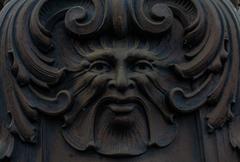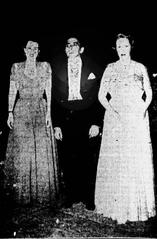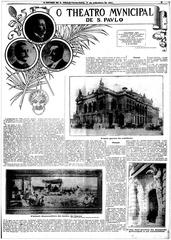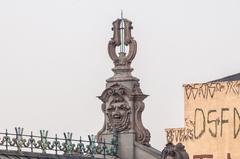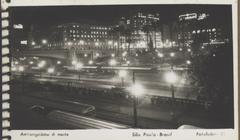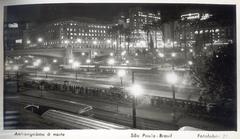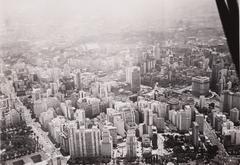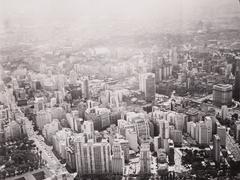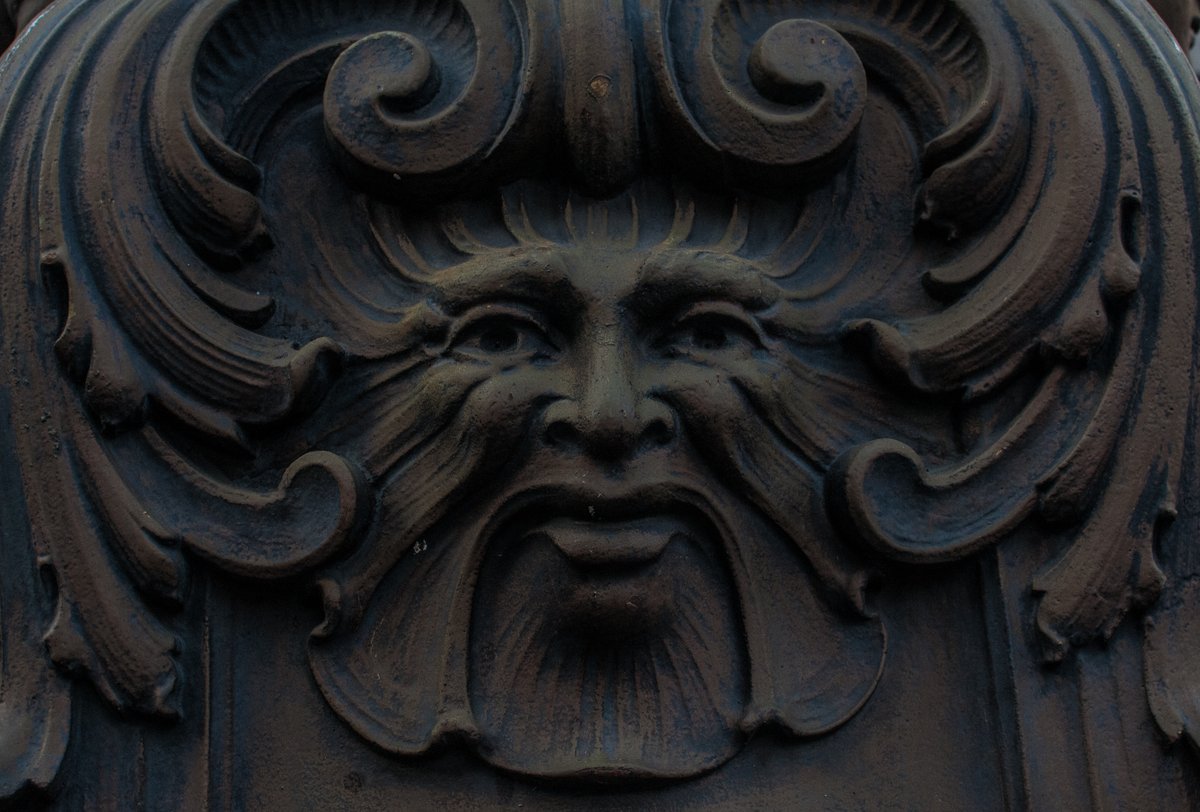
Municipal Theater of São Paulo: Visiting Hours, Tickets, and Historical Significance
Date: 14/06/2025
Introduction
The Theatro Municipal de São Paulo stands as a beacon of Brazil’s cultural and architectural heritage. Since opening its doors in 1911, it has played a pivotal role in shaping the nation’s artistic identity, hosting world-class performances and landmark events such as the influential Semana de Arte Moderna (Modern Art Week) of 1922. Inspired by the Paris Opera House, the theater’s grand architecture—combining Italian Renaissance, Baroque, and French neoclassical styles—reflects São Paulo’s early 20th-century aspirations to become a cosmopolitan cultural capital (Theatro Municipal Official Site, DailyArt Magazine, Accidentally Wes Anderson, Wikipedia).
Today, the theater remains not only a historical monument but also a vibrant venue for opera, ballet, symphonic concerts, and artistic innovation. Conveniently located in São Paulo’s historic downtown, the Theatro Municipal is surrounded by a wealth of cultural attractions and is accessible to both locals and visitors. This comprehensive guide details its history, architecture, cultural relevance, and provides essential information on visiting hours, tickets, accessibility, and tips for an enriching experience (Atlas Obscura, Wanderlog Guide).
Table of Contents
- Historical Overview
- Architectural Features and Restoration
- Visitor Information
- Cultural Significance and Nearby Attractions
- Frequently Asked Questions (FAQ)
- Conclusion and Planning Your Visit
- References
Historical Overview
Origins and Construction
The Theatro Municipal de São Paulo was conceived at the turn of the 20th century by the city’s coffee-wealthy elite, eager to project São Paulo as a world-class metropolis. Construction commenced in 1903 under the direction of engineer Ramos de Azevedo, with Italian architects Claudio and Domiziano Rossi lending their expertise. After eight years of meticulous work, the theater was inaugurated on September 12, 1911 (Theatro Municipal Official Site). The design, inspired by the Palais Garnier in Paris, features a grand façade, imported Italian marble, French stained glass, and Belgian ironwork, highlighting São Paulo’s global connections and ambitions at the time.
Modern Art Week of 1922
A defining moment in the theater’s history was hosting the Semana de Arte Moderna in February 1922. This event marked the birth of Brazilian Modernism and challenged prevailing academic traditions. Artists and intellectuals such as Mário and Oswald de Andrade, Anita Malfatti, and Heitor Villa-Lobos introduced avant-garde ideas through performances, readings, and exhibitions. Although initially met with resistance, the event catalyzed a new Brazilian cultural identity, leaving a lasting impact on literature, music, and the visual arts (DailyArt Magazine, Encyclopaedia Britannica).
Cultural and Social Impact
Since its inception, the Theatro Municipal has hosted legendary international artists like Enrico Caruso, Maria Callas, and Arturo Toscanini, and remains home to the São Paulo Municipal Symphony Orchestra, Ballet, and Choir. The theater has also played a significant political and social role, hosting civic events and serving as a gathering place for both celebration and protest, reflecting its deep roots in São Paulo’s urban life (Theatro Municipal Official Site).
Architectural Features and Restoration
The theater’s eclectic architecture is a harmonious blend of Italian Renaissance, Baroque, and French neoclassical styles. Its façade is adorned with allegorical sculptures, Corinthian columns, and elaborate stonework (Wikipedia, Accidentally Wes Anderson). Inside, the grand lobby dazzles with marble staircases, gilded details, and frescoes by Domenico de Angelis.
The horseshoe-shaped auditorium seats around 1,500 guests and features a magnificent crystal chandelier and ornate ceiling artwork. Over the decades, the theater has undergone several significant restorations, notably in 1960, 1989, and between 2008 and 2011, to preserve its artistic and structural integrity while modernizing facilities and enhancing accessibility (Theatro Municipal Restoration).
Visitor Information
Location and Accessibility
- Address: Praça Ramos de Azevedo, s/nº, Sé, São Paulo.
- Public Transport: Easily accessible via Anhangabaú and República metro stations.
- Parking: Available at MultiPark Praça das Artes/Theatro Municipal, Rua Conselheiro Crispiniano, 378 – Sé. Current rates and operating hours can be found on the official website.
Visiting Hours
- Box Office: Monday–Friday: 10:00 AM–7:00 PM; Weekends/Holidays: 10:00 AM–5:00 PM.
- Guided Tours: Generally Tuesday–Sunday, 10:00 AM–5:00 PM (times may vary, especially on performance days).
- Performances: Begin typically around 8:00 PM; check the event calendar for details.
Tickets and Guided Tours
- Purchasing Tickets: Available online or at the box office. Advance purchase is recommended, especially for popular performances (Official Theater Website).
- Guided Tours: Offered in Portuguese and on select days in English and Spanish. Tours include main auditorium, Salão Nobre, and backstage areas. Book ahead due to limited group sizes (Theatro Municipal Tours).
- Prices: General admission for tours is around R$30, with discounts for students, seniors, and children. Performance ticket prices vary by event.
Dress Code and Etiquette
- Dress: No strict code; smart attire is encouraged, especially for evening shows.
- Photography: Allowed in public areas and during tours; prohibited during performances.
- Arrival: Arrive at least 30 minutes early to allow for security checks and to find your seat.
Amenities and Practical Tips
- Accessibility: Ramps, elevators, reserved seating, and assistive listening devices are available.
- Facilities: Restrooms, cloakroom, café, and multilingual staff assistance provided.
- Dining: Below the theater, Bar dos Arcos offers a unique dining setting within historic arches (Bar dos Arcos). Reservations are recommended for groups.
- Safety: The downtown area is bustling; stay alert, avoid displaying valuables, and plan your return travel in advance.
Seasonal and Safety Considerations
- Climate: The theater is climate-controlled year-round.
- Special Events: Check the calendar for festivals, anniversary celebrations, and cultural programming, especially in September and during citywide festivals (Wanderlog Guide).
Cultural Significance and Nearby Attractions
The Theatro Municipal is central to São Paulo’s cultural scene and urban identity. Its role in launching Brazilian Modernism and supporting both established and emerging talent continues to inspire the arts nationwide. The theater is surrounded by other notable cultural and historical sites, including:
- Praça das Artes: Modern arts complex adjacent to the theater.
- Galeria do Rock: Iconic shopping center for music and culture.
- Viaduto do Chá: Offers city center views.
- Edifício Martinelli: Historic skyscraper with rooftop access.
- Catedral da Sé: Architectural landmark.
The surrounding neighborhood is lively and well-served by cafes, restaurants, and shops, making it ideal for exploring before or after your visit.
Frequently Asked Questions (FAQ)
Q: What are the Theatro Municipal de São Paulo visiting hours?
A: Box office: Mon–Fri 10:00 AM–7:00 PM; Weekends/Holidays 10:00 AM–5:00 PM. Guided tours: Typically Tues–Sun, 10:00 AM–5:00 PM. Always check the official website for updates.
Q: How can I buy tickets?
A: Purchase online or at the box office. Advance booking is recommended, especially for high-demand performances (Official Theater Website).
Q: Is the theater accessible?
A: Yes. Ramps, elevators, accessible restrooms, and wheelchair seating are available. Contact the theater ahead for special accommodations.
Q: Are guided tours available in English?
A: Yes, on select days. Check the tour schedule for availability.
Q: Can I take photos inside?
A: Photography is permitted in public areas and during tours, but not during performances.
Conclusion and Planning Your Visit
The Theatro Municipal de São Paulo is more than an architectural gem; it is a living symbol of Brazil’s evolving culture and artistic innovation. From hosting pivotal events such as the 1922 Modern Art Week to presenting world-class performances today, the theater offers a unique and enriching experience. Whether you are passionate about history, architecture, or the performing arts, a visit promises insight into São Paulo’s rich heritage.
Plan your visit:
- Check the official website for updated visiting hours, ticket information, and event schedules.
- Download the Audiala app for real-time updates and exclusive content.
- Explore nearby attractions and make the most of your cultural journey through São Paulo.
References
- Theatro Municipal Official Site
- DailyArt Magazine: Modernism in Brazil
- Atlas Obscura: Theatro Municipal de São Paulo, Brazil
- Accidentally Wes Anderson: Theatro Municipal de São Paulo
- Wikipedia: Theatro Municipal (São Paulo)
- Wanderlog Guide: Theatro Municipal de São Paulo
